Review of Gunfighter, The
Introduction
One of my favourite Westerns is the Shootist. John Wayne`s last film made in 1976, chronicles the last of a vanishing breed, the gunfighter. Embittered and hounded by rivals, he tries to seek some peace and tranquillity in his last days, but cannot escape his own legacy. It`s rightfully regarded as one of the classics of Western cinema, but nothing is new in Hollywood, as I found out when I received The Gunfighter to review. Made in 1950, it stars Gregory Peck as Jimmy Ringo, the fastest gun in the West who has come to be haunted by his reputation.
Ringo is on his way to Cayenne, but stopping at another town on the way, he`s challenged by a young would be gunfighter, eager to make a name for himself. He has to defend himself of course, and leaves pursued by three vengeful brothers. Ringo`s arrival in Cayenne doesn`t go unnoticed, and the appearance of the notorious gunslinger electrifies the town. The Marshall is an old friend of his, who is less than happy to see him. Soon it appears as if the whole town is camped outside the saloon to see what will happen. Ringo isn`t there on business though, rather he means to see his estranged wife and son. He wants to leave his notoriety behind him and settle down to a normal life somewhere where no one knows his name. It`s hard to lose that reputation though, when there is a mourning father looking for vengeance, another fame seeking trigger-happy youth, and those three brothers not too far behind.
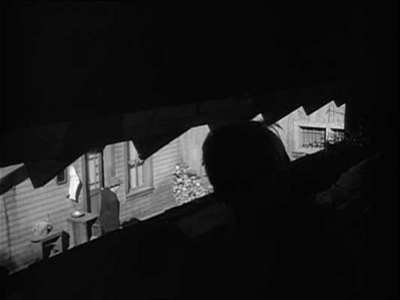
Video
The Gunfighter is presented in the original 4:3 ratio, and in black and white. Age has taken its toll on the print, with damage evident from practically the first frame. Thin black vertical lines assail certain scenes, and the film is uniformly soft throughout. It`s hardly an ideal print, but isn`t detrimental to the viewing experience.
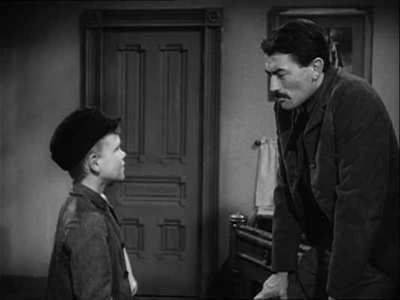
Audio
It`s a Europe friendly disc, with mono soundtracks in English, French, German, Italian and Spanish, with oodles of subtitle options. There is a minor hiss to the film, again a sign of age, but the dialogue is clear and audible throughout.
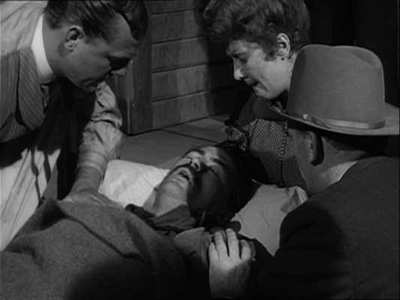
Features
Zip
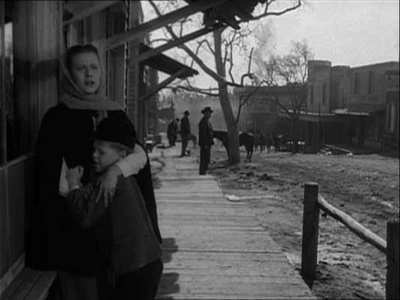
Conclusion
Like the Shootist, The Gunfighter is a telling character study. The difference is that Jimmy Ringo is still in his prime, and trying to change the direction of his life. It shows how a reputation can weigh on a man, limit his opportunities and colour people`s perceptions of him. Ringo is reputed to be the fastest in the West. Unfortunately this isn`t the kind of `sport` that a man can retire undefeated from, and the longer his notoriety lasts, the harder it is to leave behind. The only way anyone can assume the mantle of `the fastest` is to beat the reigning gunfighter. It`s natural selection at its harshest. Wherever Ringo goes, there is invariably someone barely out of his teens with a gun strapped to his thigh, or the law hounds him. Either way he has to face the consequences of his actions and reputation.
The Gunfighter does an excellent job of showing the effects of this curse, by showing the public attention Ringo`s notoriety and infamy generates. Gregory Peck is excellent as the troubled gunfighter; he exudes a weary menace tinged with a sense of hope that he can change his life for the better. A cast of interesting characters, not least of which is Cayenne`s Marshall Mark Strett as played by Millard Mitchell, supports him. He`s the one member of the gang who escaped the outlaw life and made a better future for himself. He`s sympathetic to Ringo`s plight, but is equally concerned by what effect the gunfighter`s presence will have on the town. Perhaps the weak point is the family Ringo has returned for, his wife Peggy as played by Helen Westcott is indecisive and unassertive, and his son exudes that fifties wholesomeness that is indicative of a lack of characterisation. Since the whole of the narrative revolves on Ringo`s desire to reunite with his family, when that reunion eventually comes it is something of a damp squib. That has more to do with the way women were characterised in Westerns of this period, but to my more modern sensibilities, Peggy really only came alive in the last scene of the film.
For a film of the fifties, The Gunfighter is surprisingly dark, layered and textured. Not for this film are the simple characterisations of good versus evil, black versus white costumes. As with many of the Hollywood classics, the dialogue is peerless, and the tone of the film is punctuated by some delicious moments of comedy. As an examination of the notoriety of the gunfighter, it is ahead of its time, and the end of this film is refreshingly bleak and downbeat. Despite the rather creaky state of the film after fifty plus years, it`s still well worth watching.
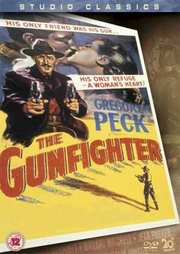






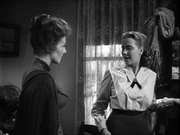
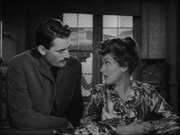
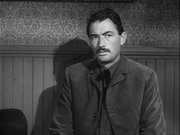
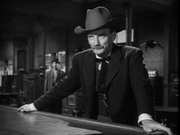
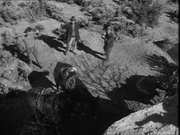

































Your Opinions and Comments
Be the first to post a comment!